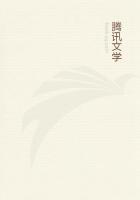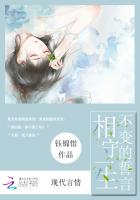Jieqis,or the Twenty-four Solar Terms,are the unique cultural heritage created and passed down by the Chinese ancestors。A reflection of season-changing and a guide to agricultural arrangements,the Terms hold an influence upon the daily lives of Chinese people in many ways。It is along the Yellow River Valley that the concepts of jieqis have been established on the basis of the valley's weather patterns and other natural phenomena-a result of the valley's role as China's political center for two thousand years。Since China has a vast territory and a varied terrain,the twenty-four jieqis are just referential to many places in other parts of the country。
Some take it for granted that jieqis are associated with the lunar calendar,but actually they are defined by a solar calendar system which divides a year into twenty four parts of equal lengths according to the positions of the sun when it travels on the ecliptic longitude。In the light of this theory,the sun's path comprises twenty four divisions,each of which measures 15 celestial degrees。The sun starts from the Vernal Equinox-0 degree of celestial longitude,where the direct rays of the sun would always shine on the equator,that is,the angle of the incidence at the earth would be 90 degrees-and returns to the same point after making one revolution around the celestial globe。Such a 360-degree journey is called a solar year and each part of 15 degrees is a jieqi。There are twenty-four jieqis altogether。
Even in the Spring-Autumn and the Warring States period,Chinese had the concepts that the sun appears at different positions。Later on they studied the links between the natural laws of life and the positions of the sun and the moon at the beginning or the end of a month,thus dividing the year into several parts which equal one another。Each part was given a specific name,and they were called jieqis in general。
Eight jieqis were mentioned in the Twelve Months of the Spring and Autumn Annals of Lord Lu Buwei,a book compiled in the late part of the Warring States period。They were lichun(The Beginning of Spring),chunfen(The Spring Equinox or The Vernal Equinox),lixia(The Beginning of Summer),xiazhi(The Summer Solstice),liqiu(The Beginning of Autumn),qiufen(The Autumn Equinox),lidong(The Beginning of Winter),and dongzhi(The Winter Solstice)。These eight terms were regarded as the most important,for they accurately mark the change of seasons,thus serving as the clear divisions of a year。It was in the book of Master Huainan that the whole system of the Twenty-four jieqis were finally decided upon。
Jieqi was called qi in ancient China。Then in each month there were often two solar terms of qis;the first one was generally named“jieqi”and the other“zhongqi”。Their dates are mirrored by the Gregorian calendar,so we find that during the first half of a year“jieqi”is around the 6th day of a solar month,and“zhongqi”around the 21st;in the second half of a year,“jieqi”is around the 8th and“zhongqi”around the 23rd。
These solar terms have meaningful titles。Some of them reflect the change of seasons such as the Beginning of Spring,the Beginning of Summer,the Beginning of Autumn,and the Beginning of Winter;some embody the phenomena of climate like the Waking of Insects(Jingzhe),Pure Brightness(Qingming),Lesser Fullness of Grain(Xiaoman)and Grain in Ear(Mangzhong);and some indicate the change of climate like Rain Water(Yu Shui),Grain Rain(Gu Yu),Lesser Heat(Xiao Shu),Greater Heat(Da Shu),lesser Cold(xiaohan),Greater Cold(dahan)。
二十四节气是中华民族独创的文化遗产,它能反映季节变化,指导农事活动,影响着千家万户的衣食住行。由于两千年来,我国的政治活动中心主要集中在黄河流域,二十四节气也就以这一带的气候和物候为依据建立起来。由于我国幅员辽阔,地形多变,故二十四节气对于很多地区来讲只是一种参考。
有人认为二十四节气从属农历,其实,它是根据阳历划定的。即根据太阳在黄道上的位置,把一年划分为二十四个彼此相等的段落。也就是把黄道分成二十四等份,每等份各占黄经十五度。视太阳从春分点(黄经零度,此刻太阳垂直照射赤道)出发,每前进十五度为一个节气;运行一周又回到春分点,为一个回归年,合三百六十度,因此分为二十四个节气。
二十四节气的起源
早在春秋战国时代,我国人民就有了日南至、日北至的概念。随后人们根据月初、月中的日月运行位置,天气及动植物生长等自然现象之间的关系,把一年平分为若干等份,并且给每等份取了个专有名称,这就是节气。到战国后期成书的《吕氏春秋》“十二月纪”中,就有了立春、春分、立夏、夏至、立秋、秋分、立冬、冬至等八个节气名称。这八个节气,是二十四个节气中最重要的节气。这八个节气标示出季节的转换,清楚地划分出一年的四季。后来到了《淮南子》一书的时候,就有了和现代完全一样的二十四节气的名称。
古时把节气称“气”,每月有两个气:前一个气叫“节气”,后一个气叫“中气”。“节气”和“中气”的具体日期都以公历为参照,上半年“节气”总是在阳历的每月六号左右,“中气”总在二十一号左右;而下半年则分别在八号和二十三号左右。
每个节气的名称都有一定含义。有的反映季节变化,如立春、立夏、立秋和立冬;有的折射气候现象,如惊蛰、清明、小满和芒种;还有的表明天气变化,如雨水、谷雨、小暑、大暑等等。
立春The Beginning of Spring(1st
solar term)
雨水Rain Water(2nd solar term)
惊蛰The Waking of Insects(3rd
solar term)
春分The Spring Equinox(4th
solar term)
清明Pure Brightness(5th solar term)
谷雨Grain Rain(6th solar term)
立夏The Beginning of Summer(7th
solar term)
小满Lesser Fullness of Grain(8th
solar term)
芒种Grain in Ear(9th solar term)
夏至The Summer Solstice(10th solar
term)
小暑Lesser Heat(11th solar term)
大暑Greater Heat(12th solar term)
立秋The Beginning of Autumn(13th
solar term)
处暑The End of Heat(14th solar
term)
白露White Dew(15th solar term)
秋分The Autumnal Equinox(16th
solar term)
寒露Cold Dew(17th solar term)
霜降Frost's Descent(18th solar
term)立冬The Beginning of Winter(19th
solar term)
小雪Lesser Snow(20th solar term)
大雪Greater Snow(21st solar term)
冬至The Winter Solstice(22nd solar
term)
小寒Lesser Cold(23rd solar term)
大寒Greater Cold(24th solar term)














